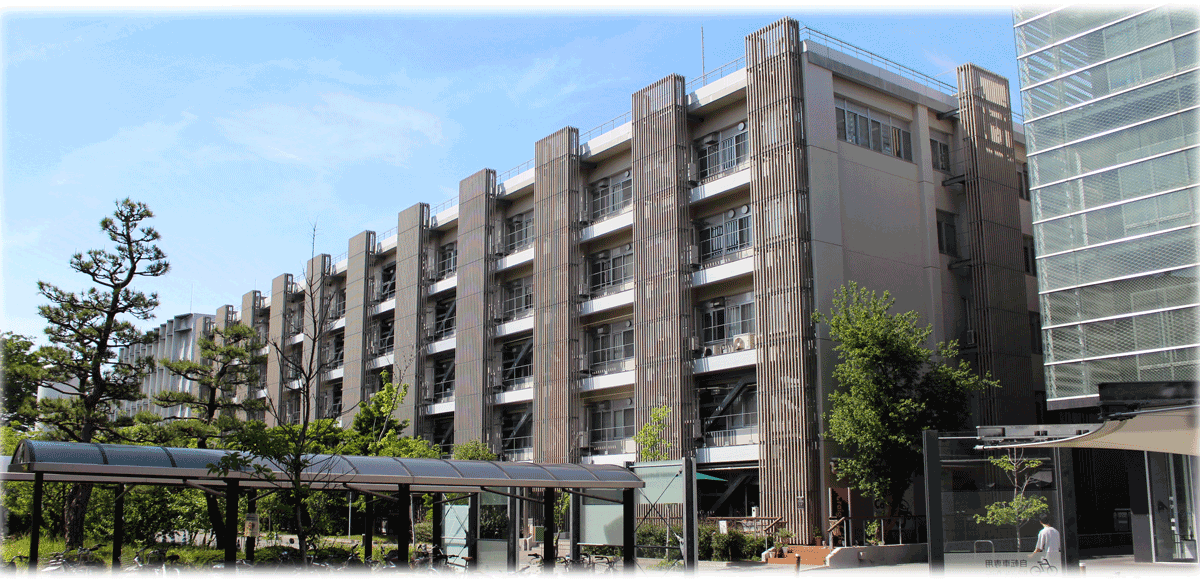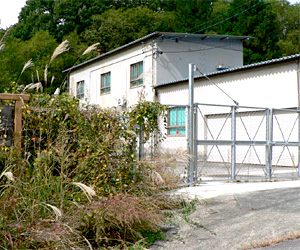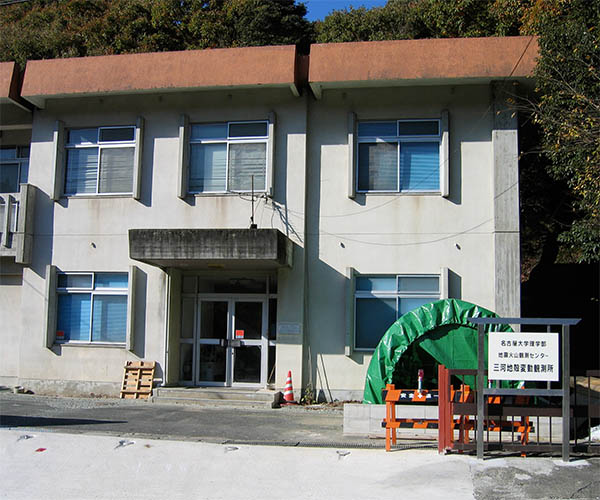About the Center
Facilities
The Earthquake and Volcano Research Center Facilities
As well as its facility in Nagoya University's Higashiyama campus, the Earthquake and Volcano Research Center has observatory buildings in Inuyama and Toyohashi cities in Aichi, and in Takayama City, Gifu. At the time the observatories were built, researchers and staff worked at each observatory servicing and maintaining the seismometers and so forth. Nowadays, though, with the advent of data transmission systems, all personnel are located centrally at the Higashiyama campus. Each observatory has its own characteristics, and experimental observations are underway to develop new observation devices utilizing their attributes. The Center at the Higashiyama campus collects data not just from Nagoya University's observation stations, but from observation stations nation-wide. Advanced research on earthquakes and volcanoes is carried out, while supporting the research and education of majoring students from the School of Science and the Graduate School of Environmental Studies.
Our Research Center

The Earthquake and Volcano Research Center
The Earthquake and Volcano Research Center is headquartered in Nagoya University's Higashiyama campus. The campus, located in the hilly eastern area of Nagoya, is apart form the downtown Nagoya making it an ideal environment for research and education. At the same time, with the Subway Meijo Line station located inside the campus, it is blessed with very convenient transport links. At the Higashiyama campus, the Earthquake and Volcano Research Center's staff very much adopt the traditional liberal and vibrant academic calture of Nagoya University in progressing their cutting-edge research of earthquakes and volcanoes, while at the same time ensuring that students' research and education receives excellent attention. University cars are used to get to earthquake and volcano observation sites that are relatively close by. The Tomei Expressway Nagoya I.C. and the Nagoya Expressway Yotsuya I.C. are both right on the doorstep, making this a very efficient place for conducting observation work. Shinkansen or airplanes are used for sites that are further afield. Nagoya Station on the Tokaido Shinkansen is about 30 minutes away, while Chubu Centrair International Airport is reachable in about an hour. Flights leave Chubu Centrair International Airport for all the country's major cities which means our location is also very convenient for remote earthquake and volcano research trips.
Our Observatories

Inuyama Observatory
An observatory in the mountains of Inuyama City, Aichi. Built on solid bedrock in national forest, the observatory is in an area close to Nagoya, but yet with a low noise level. The observatory is equipped with the GEOSCOPE broadband seismometers, part of the global broadband seismometer network. The low noise level is also making possible the experimental laser strainmeter observations currently underway.

Takayama Observatory
This observatory is located on the outskirts of Takayama City, Gifu. With its relatively cool climate, it serves as a storage depot for paper records of historical observations. It is roughly two hours along the expressway from Nagoya.

Mikawa Observatory
This observatory is located on the outskirts of Toyohashi City, Aichi. Located directly above the Philippine Sea plate, and with the Tokai slow slip area extremely close by, seismic waves are reflected back from the plate boundary and in order to capture their changes over time, ACROSS seismic vibrator has been installed. An observation tunnel exists enabling extensometer and tile meter observations to be made.







